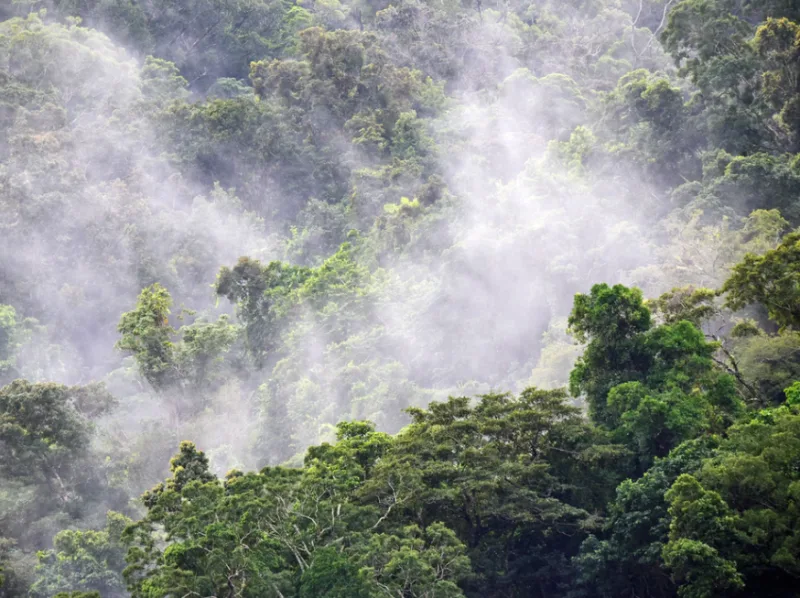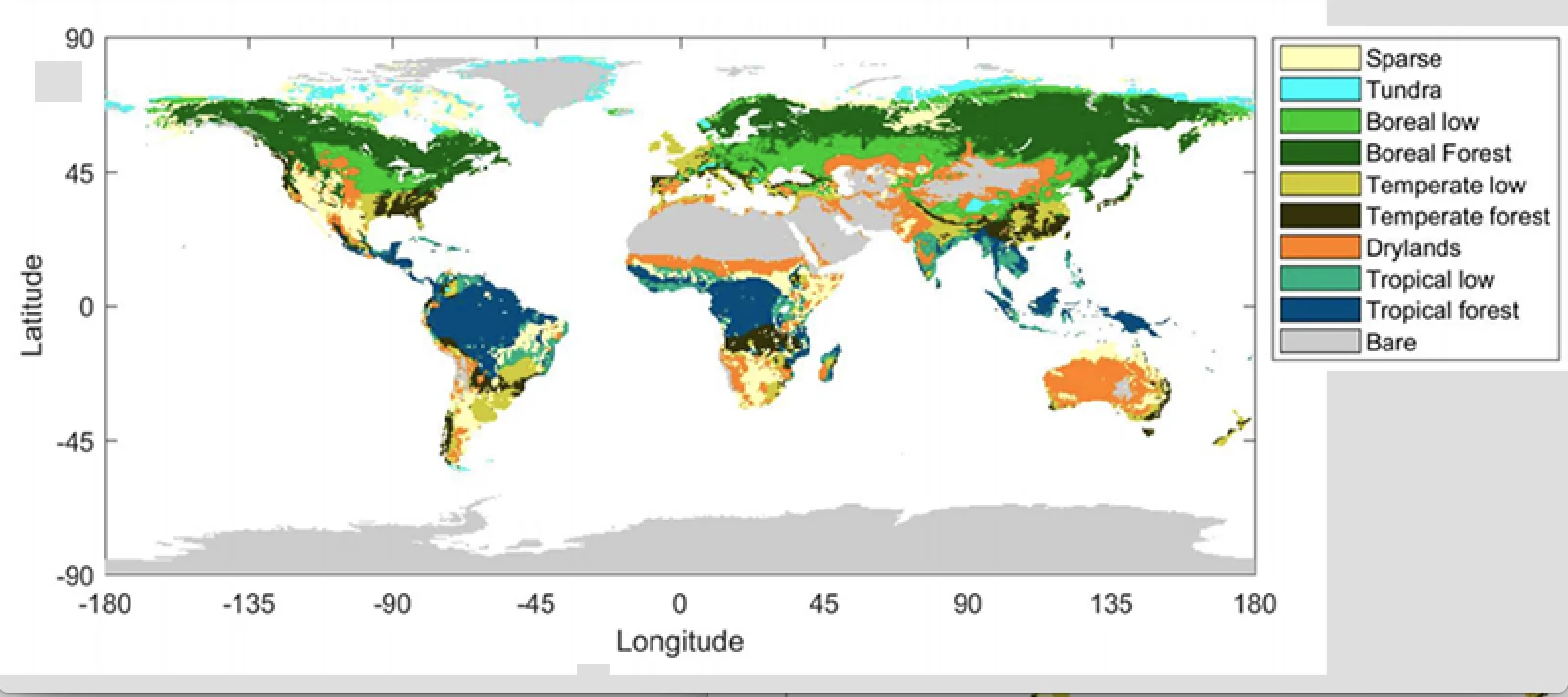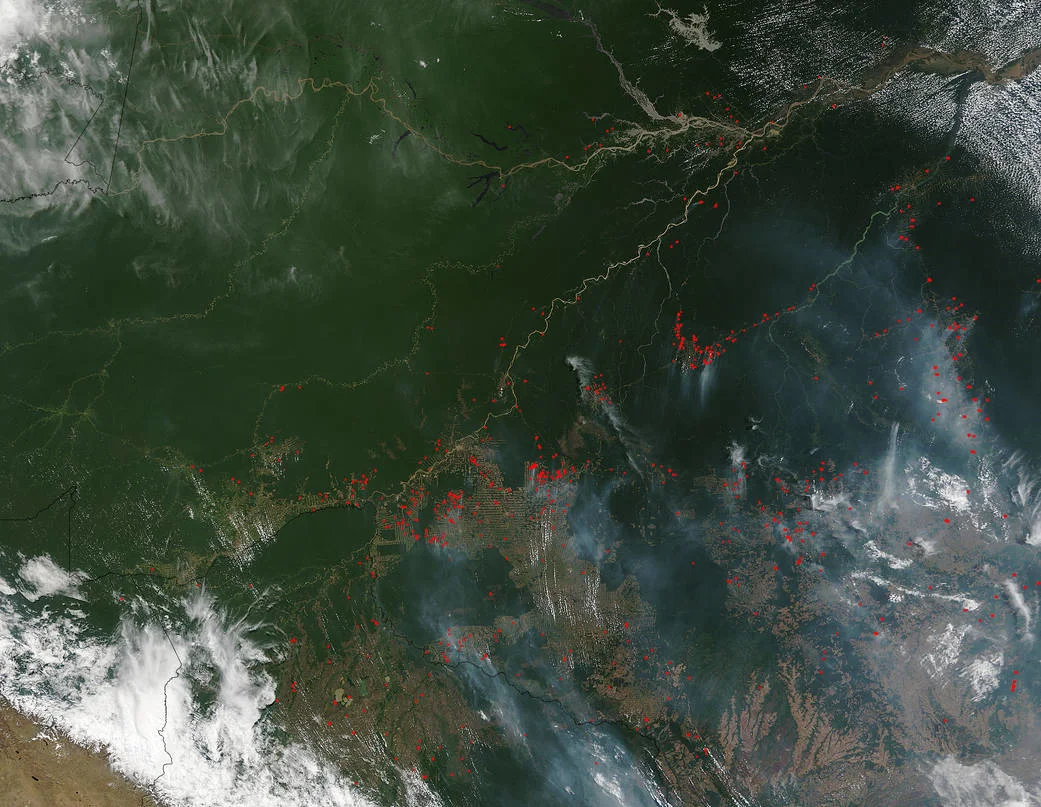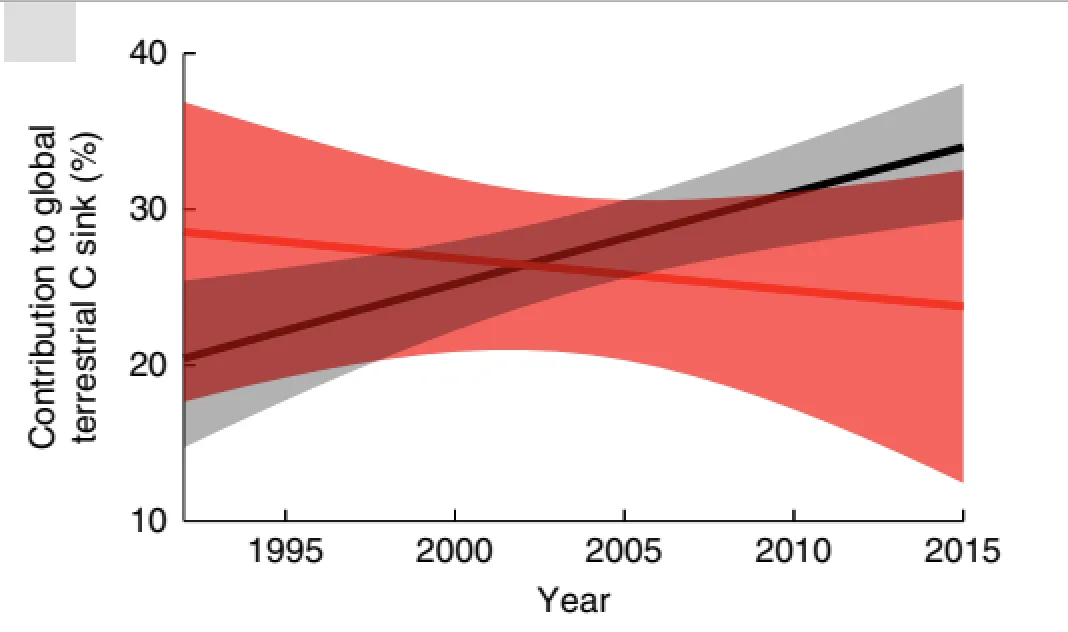
Tropical forests no longer absorb carbon dioxide like they used to
A new study shows that Earth’s tropical rainforests absorb less carbon dioxide, while boreal forests are increasing their intake of the greenhouse gas.
Forests around the world are trapping large amounts of carbon dioxide that are released by humans into the atmosphere, which is helping mitigate the devastating effects of climate change. Last year alone, Earth’s forests took care of 37.1 billion tons, equivalent to about 30 per cent of annual carbon emissions. However, a new study shows that the way this carbon is being locked into land areas is changing, with tropical forests absorbing less than before and higher latitude boreal forests becoming more efficient absorbers.
The study, published in Nature Ecology and Evolution, shows a new analytical approach based on a variety of techniques that were used by a group of researchers led by Torbern Tagesson. Remote sensing and modelling data are main sources of information, which provide a better understanding of how carbon losses and gains have been occurring across the planet’s biomes from 1922 to 2015. Two main ecosystems, tropical and boreal forests, are responsible for storing up to 53 per cent of the carbon in the land surfaces, but lately, they appear to be working at different paces.

Distribution of the world's biomes. Source: Tagesson et al 2020
Carbon that is captured by vegetation from the air is used in photosynthetic processes to build new plant elements such as leaves, roots or branches. This process occurs constantly in all major global biomes, such as tropical forests or higher latitude boreal forests, and largely contributes to the production of oxygen. Last year, northern forests absorbed the majority of global carbon emissions, mainly because they cover a significant land area. However, tropical forests are more efficient when it comes to carbon intake, because of favourable atmospheric conditions like long hours of sunshine.

Natural-color image of the Amazon fires collected by the Terra satellite with the Moderate Resolution Imaging Spectroradiometer, MODIS, instrument on September 10, 2015. Source: NASA
Tagesson and his team found that the main driver of carbon loss in tropical forests during the multiyear period studied was deforestation. Large sections of the Amazon, Indonesia or other areas of southeast Asia, are experiencing fast forest removal to provide land for new crops or cattle raising.
Meanwhile, high latitude boreal forests have increased their ability to sequester carbon although it is not fully clear why. According to the research team, the most likely cause is carbon dioxide fertilization due to increasing levels that are emitted into the atmosphere. Higher concentrations of the greenhouse gas increase plant growth, which in turn increases the amount of carbon dioxide plants absorb.

Boreal vs. tropical land carbon sink contribution between 1992 and 2015. Shaded area depicts margin of uncertainty. Source: Tagesson et al 2020
With more extensive boreal forests absorbing greater amounts of carbon dioxide, land areas were able to take in an extra one billion tons of carbon from 1992 to 2015. The graph above shows a clear increase in the amount of carbon intake by boreal forests compared to tropical forests. The results provide a clearer picture of how land carbon cycles are changing in forested areas of the world.
According to the authors, the uniqueness of this study compared to previous studies, which only examined “greening” to study forest activity, is that this one looks at above-ground biomass. This type of data provides solid information of all living plant matter that extends across the surface, which is a more thorough measurement of the carbon stored in forests. How long trees live in boreal regions, unaffected by massive wildfires like those recently experienced in Canada or Russia, will determine if this excess intake observed in recent years continues to rise in the coming decades.
Carbon dioxide concentrations, which continue to rise sharply in the 21st century, are changing the way in which our forests manage carbon, but drought, higher temperatures and other changes driven by our new climate could further alter the way Earth’s forested areas deal with carbon emissions.

